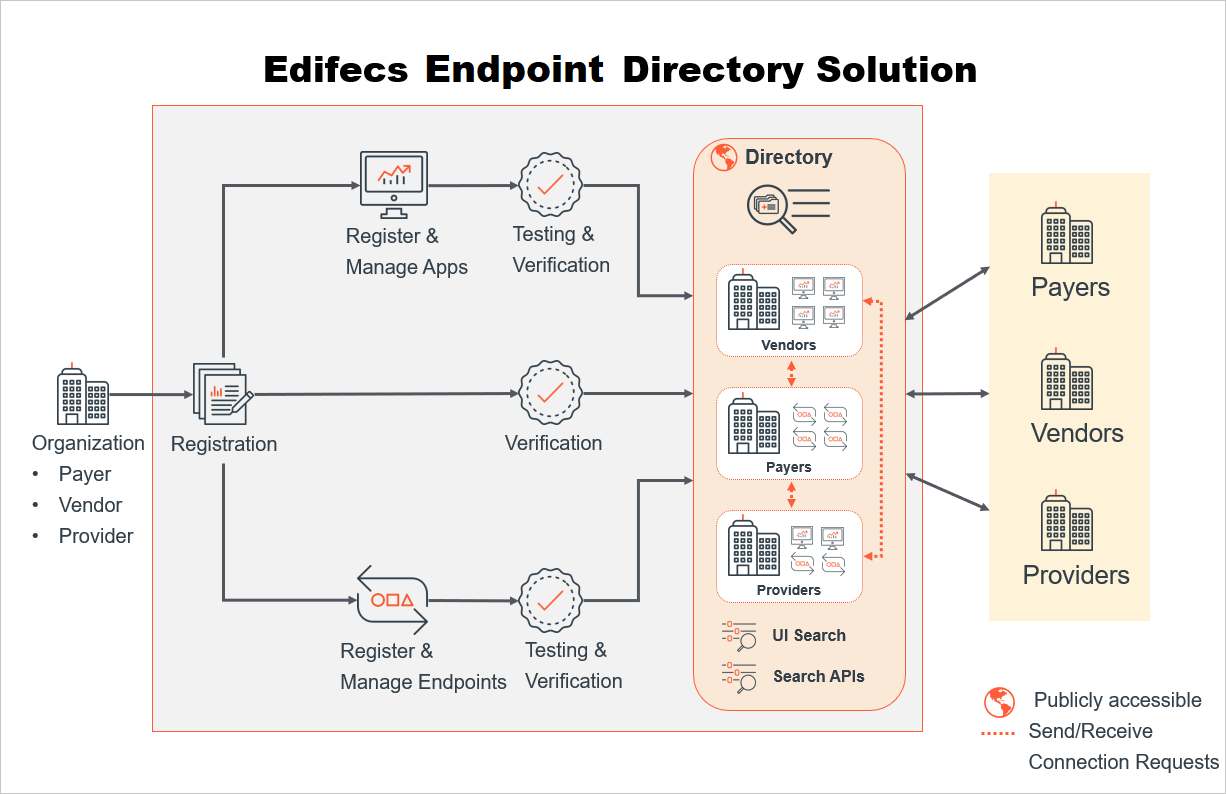|
|||
Endpoint Directory ServicesHealthcare information is commonly available through EHR (Electronic Health Records) systems. With a provider adoption rate of over 87%, many EHR systems are also connected through health information exchange (HIE) networks. However, HIE services only provide meaningful improvement when they are available to trusted exchange partners. As with other communications infrastructure, improved connectivity, and a greater number of connections, adds value to every user. However, there are barriers to effective use of HIE networks. According to ONC, the greatest barriers to effective health record exchange are technical lack of standards, financial cost, and trust (legal and business incentives to keep data from moving). Additional challenges are administrative and reporting requirements, and usability of IT systems. The goal of FHIR directory services is to store information using open standards and protocols so that each of these barriers may be overcome. In March of 2020, the Centers for Medicare and Medicaid Services released the Final Rule (“CMS Final Rule”) on Interoperability and Patient Access, requiring that CMS-regulated plans:
In support of this, Edifecs offers the Endpoint Directory service, a centralized directory of validated payer FHIR endpoints and third-party applications. This solution simplifies how healthcare organizations and app developers connect with each other to help consumers access and transfer their healthcare information. Endpoint Directory helps payers meet the new CMS interoperability regulations. Endpoint Directory Benefits:
The below Endpoint Directory solution diagram illustrates the key elements of the architecture, supporting payers, providers, and vendors with standards-based interfaces:
|




